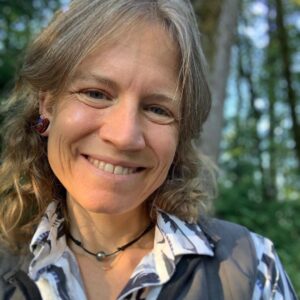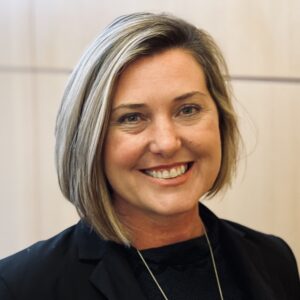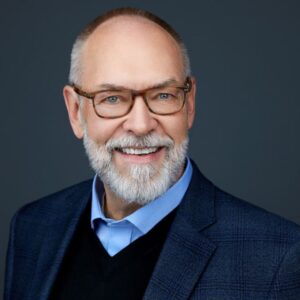| Tony Mullen is not one to express amazement easily. As a long-time investment analyst and, for more than 12 years, a driving force behind the National Investment Center for Seniors Housing & Care Industries (NIC), Anthony J. Mullen (to be precise) has seen countless investors and investment trends come and go. So it was all the more striking to hear him express, at last year’s NIC conference, enthusiastic admiration for Erickson’s recent development in the already heavily penetrated Philadelphia area. An Erickson community had, specifically, attracted almost 500 new customers in a 16-month period-a 17% growth in that area in a little over a year. Noting Erickson’s similarly fast-paced growth in such areas as Detroit, Boston, Baltimore, New Jersey, and Virginia, Mullen said, “The Erickson phenomenon begs for more serious study.” Erickson is, in essence, one of those companies that is very rapidly opening up the gates to tomorrow’s long-term care customers and, as such, bears close attention from providers in that market. What is their secret? What does their approach mean to the senior housing and care market? Recently, Erickson’s Executive Vice-President of Operations Rick Grindrod agreed to share insights and observations with Nursing Homes/Long Term Care Management Editor-in-Chief Richard L. Peck. Peck: What is the basic concept that is driving Erickson’s recent growth? Grindrod: Probably the principal differences in our approach are twofold: (1) the size of the campus-1,500 independent living units, 125 assisted living units and 240 skilled beds-which enables us to generate significant economies of scale, and (2) a commitment to the middle-income market through use of a basic monthly fee, with all add-ons offered a la carte, and a fully refundable entrance fee. Peck: How do the economics of that payment arrangement work? Grindrod: The basic fee covers one meal a day, shuttle transportation within a defined schedule and area on the campus, utilities, cable TV, and property taxes. It does not include healthcare, assisted living, or even housekeeping, all of which are up to the residents to purchase as they see fit. Skilled nursing is private-pay until Medicare and private resources are exhausted, following which residents can go on Medicaid. This is different from the more typical monthly fee in this field that is offered as a kind of insurance policy-for example, it covers healthcare whether you use it or not. Approaching the basic monthly fee the way we do makes the difference between someone with a $35,000-a-year income being able to afford this place and someone needing to make twice that amount. The entrance fee is fully refundable upon the resident’s departure or death, but the refund is contingent upon resale of the unit. Usually the entrance fee appreciates in value, and part of the new resident’s entrance fee is used to refund the previous resident’s fee. Residents can use the refund, by the way, to pay for skilled nursing. Peck: The development of these large campuses is predicated on your making an arrangement with a not-for-profit organization to operate and eventually own them. Would you explain how that works? Grindrod: Erickson works with a not-for-profit board at each campus it develops. We begin development of the campus and assume the development risk. As the units fill, we lease them to the not-for-profit, and the resident has his or her resident care agreement with that organization. When the development is complete and the significant development risk is past, Erickson owns the campus. But, as we’ve done three times now, we ask the not-for-profit board to consider purchasing the real estate and become the property owner. All three have done so, but continue to use our services under a management contract. Peck: How many campuses have you developed in this manner? Grindrod: We have opened 10 so far, and have two more in the process of construction and slated to open in the fall of 2004 and spring of 2005, respectively. Peck: One thing that people have found noteworthy about your campuses is the sheer array and variety of activities in which the residents engage-everything from on-site college classes to Tai Chi. Would you discuss that and how you achieve this operationally? Grindrod: It gets back to the size of our campuses. With some 2,200 people on campus, we have a huge, rich diversity represented. In view of this, our management philosophy is that it’s our job to encourage resident leadership and to facilitate program development, not to manage or control the level of activities. For example, one campus had a model sailboat “yacht club,” and they wanted to conduct races on the campus pond, which was really a somewhat isolated stormwater retention basin. We built a walkway for access and set up some small launching facilities and, voila, we had a yacht club. It wasn’t long before other campuses wanted to get involved, and now we have model sailboat regattas. In short, the job of our Community Resources department, as we call it, is to remove barriers and handle the logistics so that our residents can express their interests and passions in all kinds of ways. Peck: Are there any particularly noteworthy design features of these large campuses? Grindrod: Our 1,500 independent living units are divided into neighborhoods of four 125-unit buildings. Each neighborhood has a community building, or clubhouse, that has common functions-front desk, mailboxes, dining room, small store-plus main features that serve the entire campus-for example, a health club/swimming pool, a medical center, a TV studio, or a large conference center. All the buildings, including skilled nursing, are connected by enclosed, climate-controlled walkways, so that once you enter a particular front door, you never have to go outside again. Peck: What are Erickson’s plans for spreading this model throughout the country? Grindrod: Our primary focus is on the huge, middle-income senior populations near big cities. We’re strongest right now on the I-95 corridor, but we have developments in Detroit and are moving into Chicago and down to Florida. We will ultimately move across the country, but we’re taking it in bite-sized steps. We’re doing so aggressively, though, because we believe that we have a product that solves the problem of social isolation for today’s seniors. NH |











